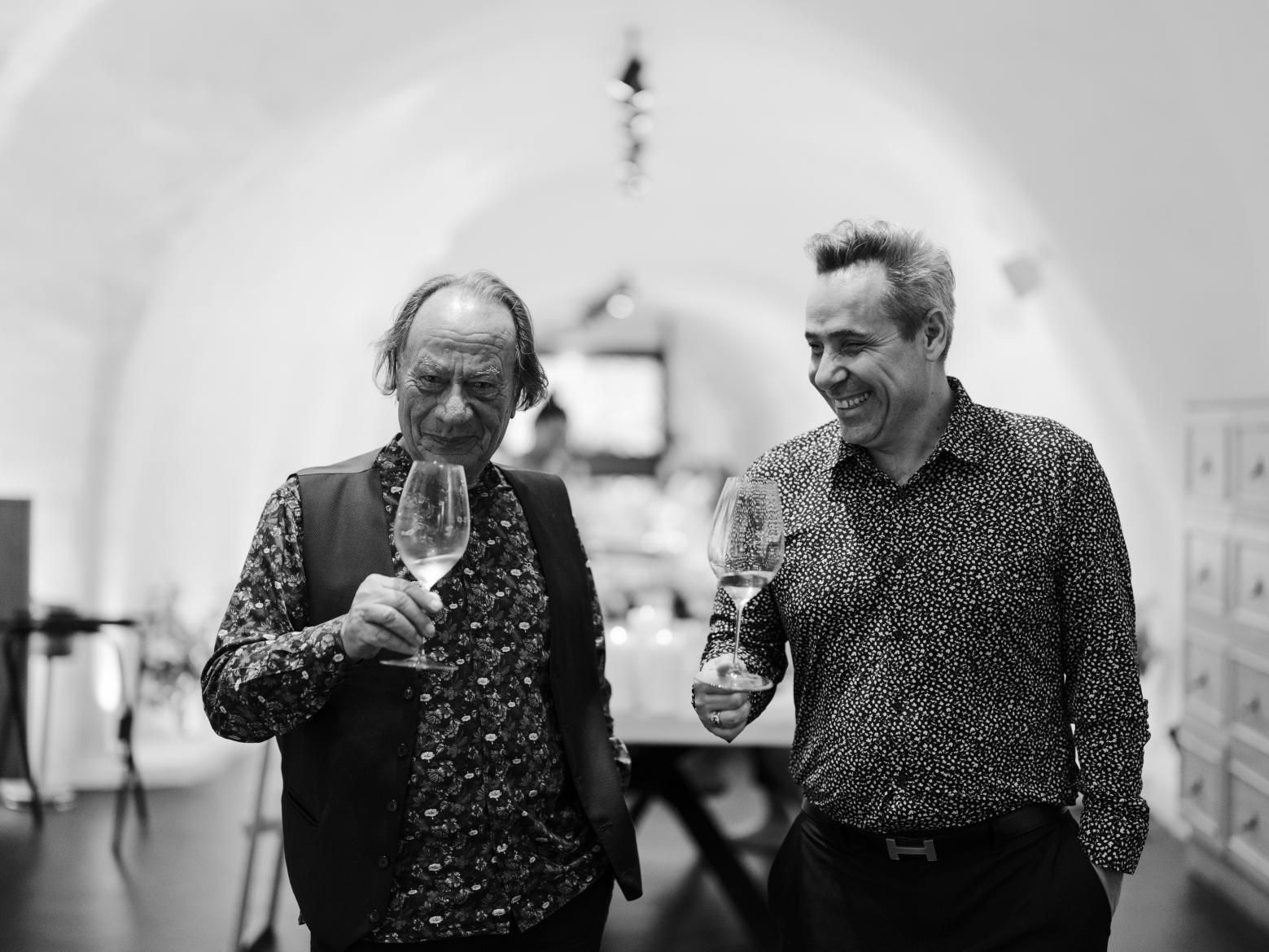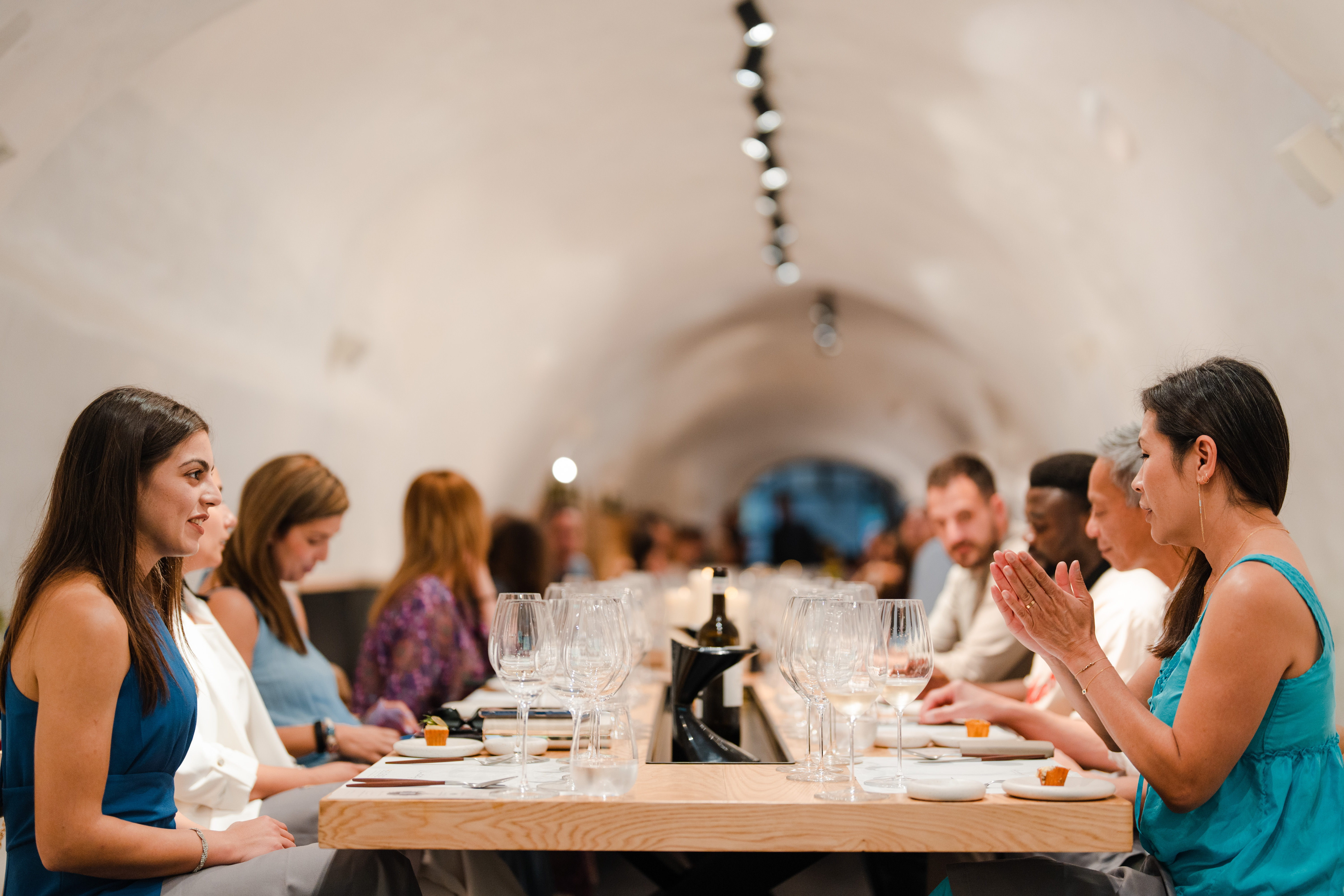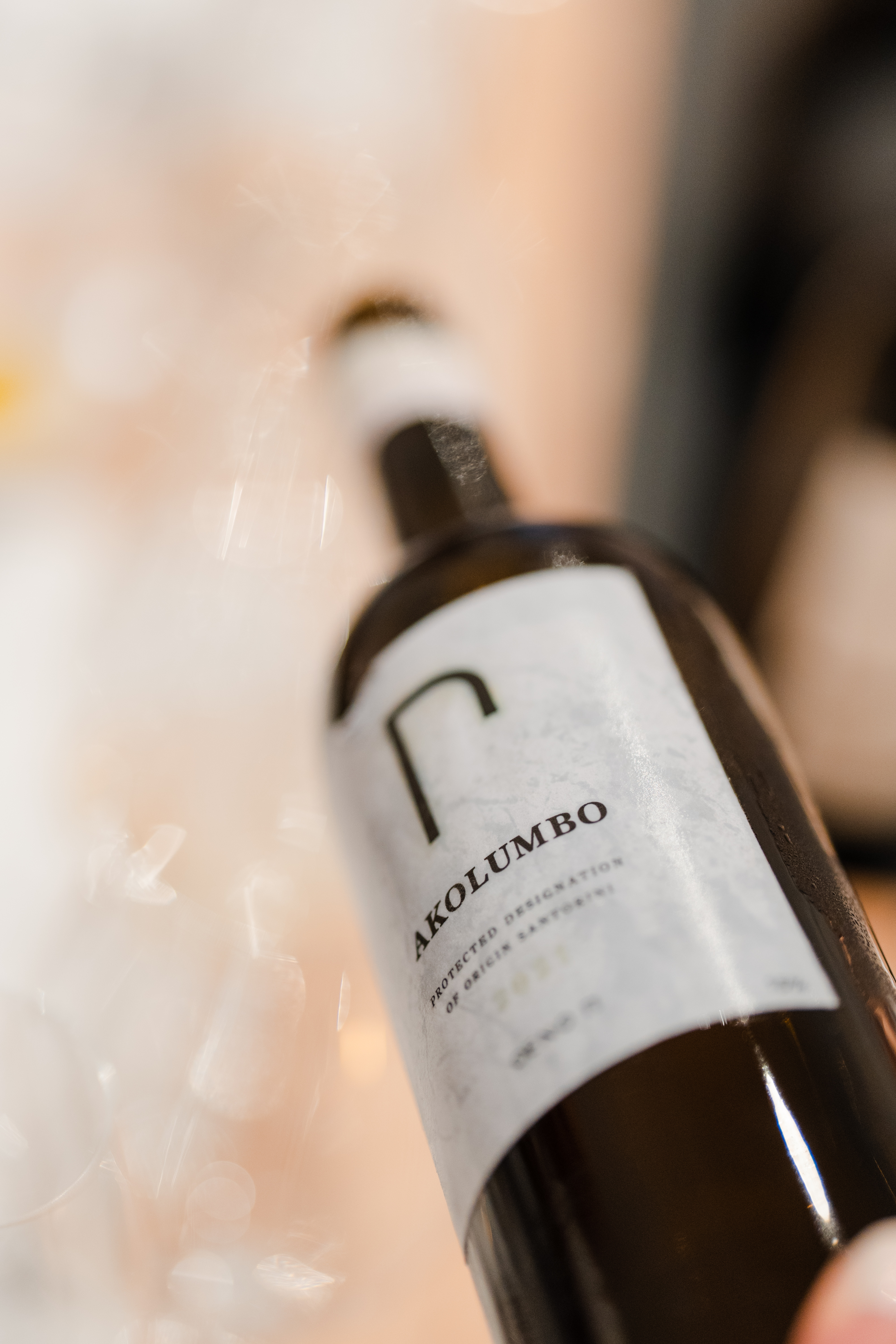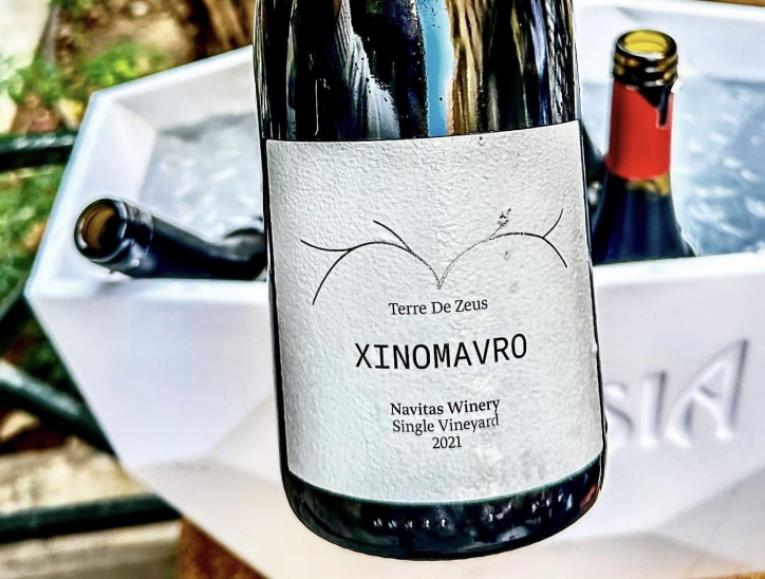Let the real Nykteri please stand up
By Yiannis Karakasis MW
"Tradition is not the worship of ashes but the preservation of fire." This quote perfectly captures the intriguing story behind Santorini's Nykteri wine, a traditional style crafted from grapes pressed during the very night of the harvest. Nykteri, which translates to "the wine of the night" (nykta meaning "night" in English), emerged as a refined and aristocratic contrast to the dense and tannic Santorinian Brousko wine, made from grapes pressed at the end of the harvest. However, the question arises: What does Nykteri represent today, or rather, what vision do we hold for its future?
Greek legislation currently specifies two requirements for Nykteri. Firstly, it must possess a minimum alcohol content of 13.5% abv. Secondly, it must undergo oak ageing for at least 3 months. The first requirement includes most Santorini wines in terms of alcohol content, as it is rare to find a Santorini Assyrtiko below 13.5% nowadays. Furthermore, the minimum oak ageing requirement encompasses wines with any duration of oak influence, whether it be 3 months, 24 months, or even longer. However, considering the present state of Nykteri, it is crucial to explore its character in the past.
During a wine dinner event held in the historic Wine Caves of Selene Restaurant (pictured below), I had the opportunity to ask renowned Santorini producer Paris Sigalas of Oeno P about the true traditional Nykteri. Paris Sigalas, an influential winemaker, shared his insights: "The traditional Nykteri of Santorini was made from overripe grapes harvested in September rather than on August 10th which is more or less the case in our days... Overripe grapes didn't just yield high-potential alcohol of 16 or 17% abv; they also carried the influence of the sun on the grape aromas and flavours." Sigalas explained that the process involved collecting the creme de la creme, which is the free-run must, from the wine press, followed by fermentation in oak barrels. The barrels were then sealed without topping up, allowing an ullage (headspace) in contact with air. Consequently, the traditional Nykteri possessed a high alcohol content of 15.5 - 17% abv and exhibited an oxidative, nutty style with occasional unfermented sugars.
"Many of these Nykteri wines developed a layer of flor, similar to Sherry," Sigalas adds, "and the finest amongst them were particularly captivating. Often, due to the high level of ripeness of the grapes, the wines retained residual sugar, ranging from 6g/l to 8g/l, and sometimes none." In this fashion, Ktima Sigalas introduced the Nykteri Sigalas in 2009, featuring close to 16% abv, some residual sugars, and extended barrel ageing. There was just one crucial differentiation: they opted to fill the barrels, aiming for a fresher style rather than an oxidative one.
During the same tasting at the Wine Caves, Sigalas presented a new label Oeno P Akoloumpo 2021 for the first time, set for release in September. I had the opportunity to try this wine last year, maturing in amphorae, and found its fruit expression outstanding. It stood as a rich wine that required no further enhancement, showcasing complexity in its generosity and focus. The use of barrels may have added extra (unwanted?) weight to the wine. This represents the "New Nykteri" from the Oeno P winery, where Paris Sigalas writes a new chapter in Santorini wine through the widespread adoption of amphorae for ageing and gentle handling. But, it cannot be labelled as Nykteri since it matures in amphorae for two years instead of the mandated minimum of 3 months in oak.
Nonetheless, a fundamental question remains: What is the relationship between Santorini and oak? Do the producers desire it, or do they prefer stainless steel tanks or even the clay jars that have become prevalent? Ultimately, what defines the Nykteri of the future, and what do we aspire for it to become? Sigalas raises an intriguing point about the name Nykteri losing its significance, as with the aforementioned two conditions, almost all wines can potentially be Nykteri. This topic warrants further discussion, and those familiar with my work know that we will delve into it during the "Nykteri, Past, Present, and Future" Masterclass at Selene Vedema on September 29. So stay tuned for more...






